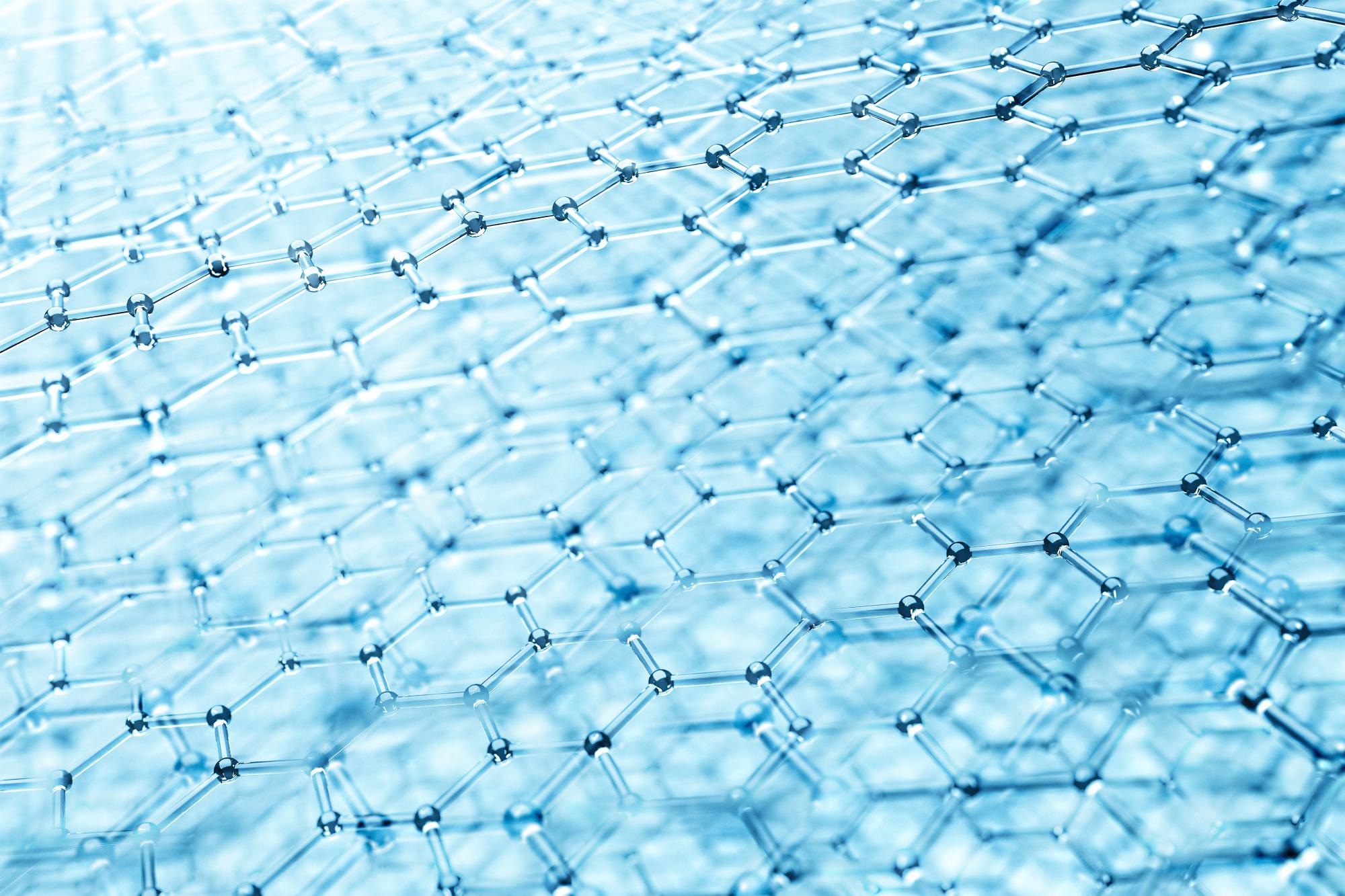A team of researchers at Osaka Prefecture University, the Japan Synchrotron Radiation Research Institute, and The University of Tokyo has created a thin-film metal−organic framework (MOF) with major applications in chemiresistive sensors, supercapacitors, electrode catalysts, and environmentally friendly storage media for natural gas.

Image Credit: Shutterstock / chaoss
Metal–organic frameworks are an extensive class of crystalline materials with ultrahigh porosity (up to 90% free volume) and high surface areas reaching beyond 6000 m2/g. Combined with the high variability in the organic and inorganic components of their structures - a metal ion/cluster and organic linker - MOFs provide endless possibilities to material scientists.
Two-dimensional nanomaterials have unique properties due to their reduced dimensions. They can be introduced as ultimately thin components in nanodevices. Metal−organic frameworks are highly crystalline coordination polymers with well-defined nanopores.
The team constructed a conductive MOF nanosheet composed of 2,3,6,7,10,11-hexaiminotriphenylene molecules and nickel ions (HITP-Ni-NS). Bottom-up synthesis of HITP-Ni-NS at air/liquid (A/L) interfaces allows easy transfer to any substrate.
Structure of Metal–Organic Frameworks
Metal–organic frameworks (MOFs) are a class of material composed of metal ions or clusters (metal-oxygen-carbon) and organic linkers bound in a symmetrical structure. The metal ions or clusters are bound to organic ligands to form one-, two-, or three-dimensional structures. A ligand is a structure defined in coordination chemistry where an ion or molecule binds to a central atom to form a coordination complex.
MOFs are a subclass of coordination polymers. However, they are more specific than coordination polymers for 2D or 3D crystallized structures. Due to their porous structure, they are also called porous coordination polymers (PCPs).
In MOFs, three distinct properties appear simultaneously - crystallinity, porosity and strong metal-ligand bonds. These give MOFs structural flexibility, a large surface area and tailorable pore sizes with useful applications in, for example, gas adsorption and storage, molecular recognition, nonlinear optics and sensor technology.
Many MOFs are photoluminescent due to the organic linkers that absorb UV light. These have applications in X-ray detectors, small-molecule sensors, pH sensors and high-technology optics.
Thin Components for Nanodevices
Two-dimensional nanomaterials - nanosheets - display unique properties due to their reduced dimensions. They are useful as ultimately thin components in various nanodevices.
Metal−organic frameworks are coordination polymers with a highly crystalline structure and well-defined nanopores. However, most of the MOFs reported are electrically inactive.
MOFs have major applications in chemiresistive sensors, supercapacitors, battery electrodes, and electrode catalysts. In order to utilize their superior conductive properties, materials scientists need to synthesize ultrathin films with a defined pore size, well-controlled growth direction, and thickness.
Traditional methods of growing film on solvothermal solution or precipitation at a solution surface provide little control of film growth. The creation of nanosheets - ultrathin films with several nanometer thickness - with a well-defined structure and crystal orientation allows researchers to control the conduction characteristics of MOFs.
The researchers developed a MOF nanosheet fabrication method that utilizes air/liquid (A/L) interfacial synthesis. This is known as the Langmuir−Blodgett method. The team was the first to successfully synthesize crystalline MOF nanosheets with complete crystal orientation.
The method creates monolayers and multilayers where the layer stacks at the A/L interface. Nanosheets synthesized at the A/L interface can also be easily transferred to various types of substrates. The layer-by-layer sequential deposition at the A/L interface enables precise control of the film thickness.
The MOF nanosheet is synthesized from 2,3,6,7,10,11-hexaiminotriphenylene (HITP) molecules and nickel ions and Ni2+ (HITP-Ni-NS). HITP-Ni-NS comprises planar honeycomb networks with each layer closely stacked via π−π interactions of triphenylene units. It is about 14nm thick - approximately 43 layers stacked in a self-assembling manner at the A/L interface.
HITP-Ni-NS is transferable to substrates such as quartz and silicon while retaining its orientation. The planar electrical conductivity of HITP-Ni-NS was recorded as 0.6 S cm−1, the highest conductivity among triphenylene-based MOF nanosheets with a thickness lower than 100 nm.
The researchers have demonstrated the potential of A/L interfacial synthesis for creating oriented MOF nanosheets and shown that nanosheet orientation influences their electronic properties. This carries major implications for the production of nanosensors, capacitors and catalysts in the future.
References and Further Reading
Takashi Ohata, Akihiro Nomoto, Takeshi Watanabe, Ichiro Hirosawa, Tatsuyuki Makita, Jun Takeya, and Rie Makiura.(2021).Uniaxially Oriented Electrically Conductive Metal–Organic Framework Nanosheets Assembled at Air/Liquid Interfaces.ACS Applied Materials & Interfaces. https://pubs.acs.org/doi/10.1021/acsami.1c16180
Soni, Sanju & Bajpai, Parmendra & Arora, Charu. (2018). A review on metal-organic framework: synthesis, properties and application. Characterization and Application of Nanomaterials. https://systems.enpress-publisher.com/index.php/CAN/article/view/551
Disclaimer: The views expressed here are those of the author expressed in their private capacity and do not necessarily represent the views of AZoM.com Limited T/A AZoNetwork the owner and operator of this website. This disclaimer forms part of the Terms and conditions of use of this website.